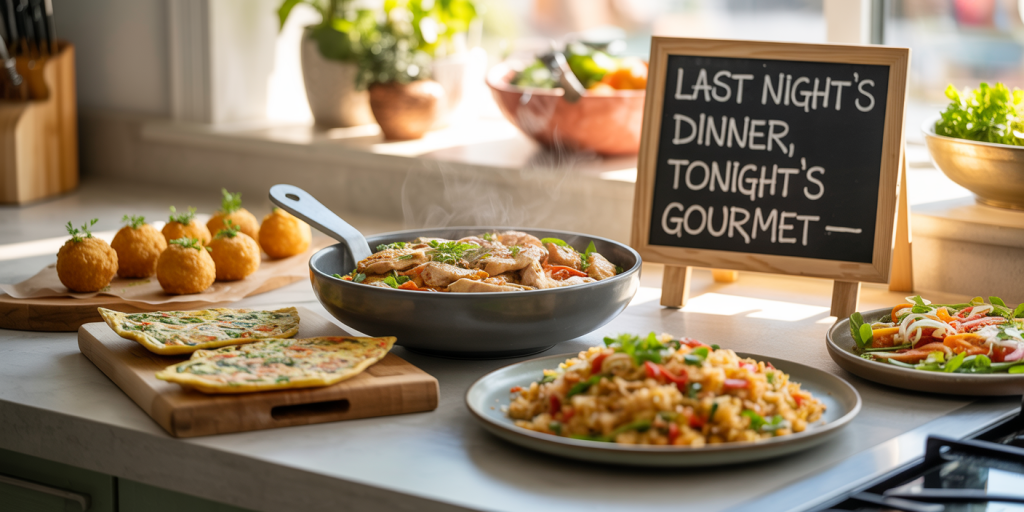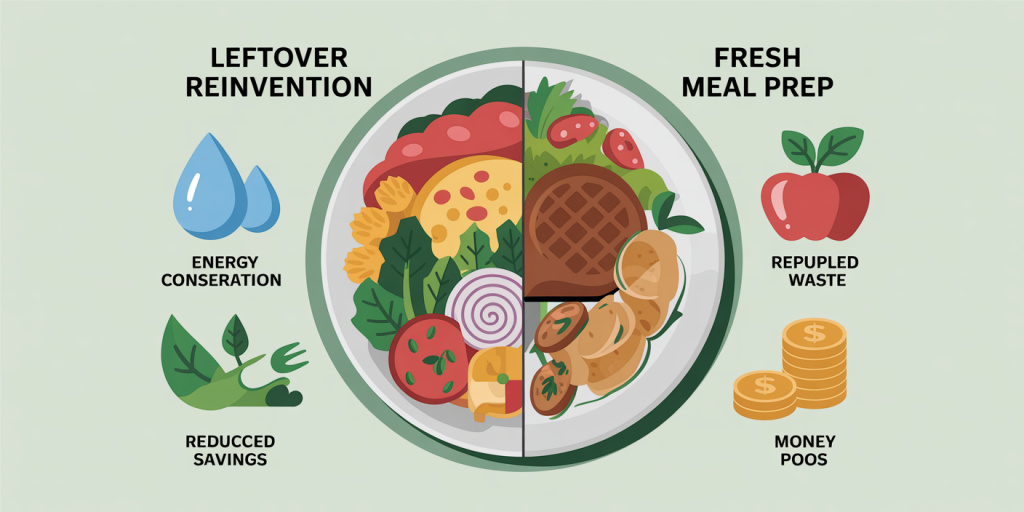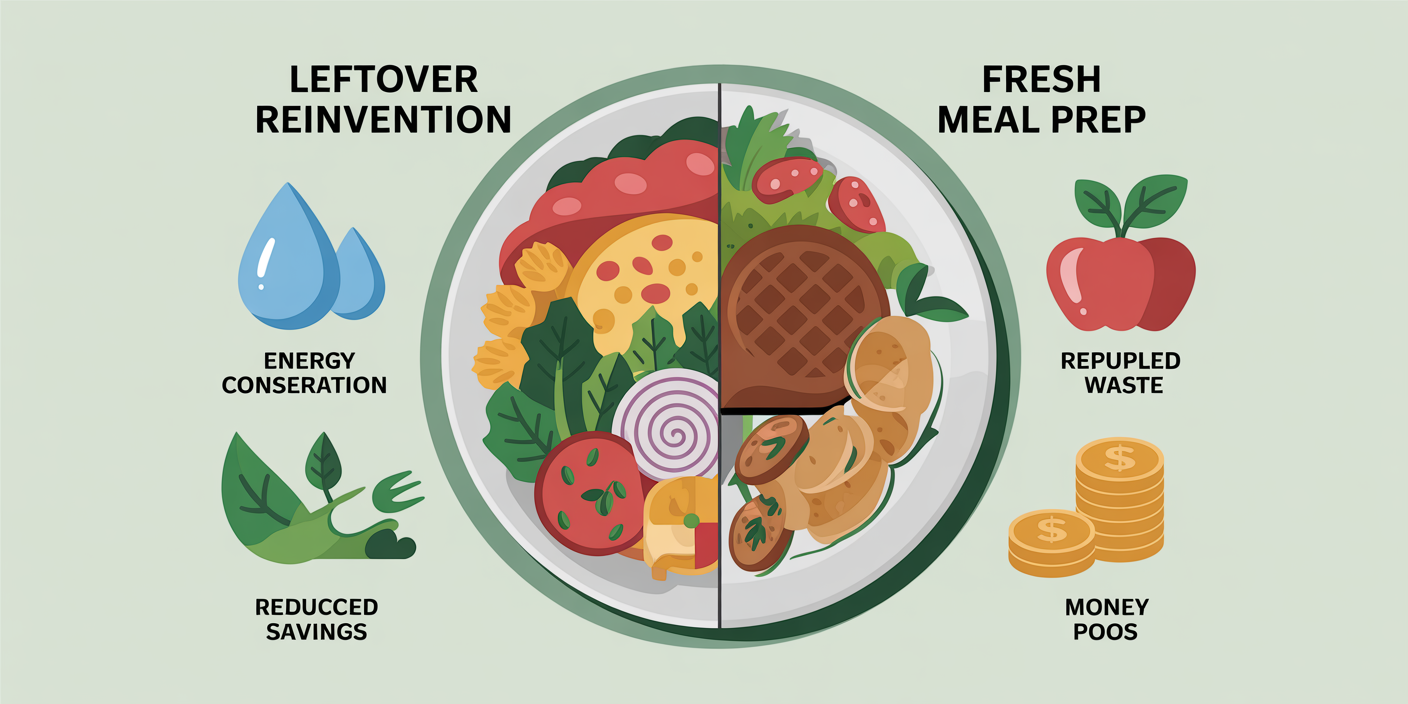In a world increasingly conscious of food waste, reinventing last night’s dinner has become both an economical and environmentally-friendly practice. According to the Food and Agriculture Organization (FAO), approximately one-third of all food produced globally is wasted, amounting to about 1.3 billion tons annually. Much of this waste happens at the consumer level, with leftover meals being discarded due to lack of inspiration or spoilage. However, with a bit of creativity and culinary know-how, leftovers can be transformed into exciting new dishes that not only save money but also reduce environmental impact and enhance family nutrition.

Beyond savings and sustainability, reinventing leftovers can also elevate your cooking skills and introduce a variety of flavors and textures into your meal routine. This article explores practical techniques, recipes, and strategies to turn yesterday’s dinner into today’s gourmet experience. It provides actionable insights, supported by data and comparative tables, ensuring maximum value from every bite.
The Psychology Behind Leftover Avoidance and How to Overcome It
Many people resist eating leftovers due to perceived monotony, lack of freshness, or simply because reheated food often lacks appeal. Studies show that about 30% of leftovers go uneaten due to these attitudes (Food Waste Reduction Alliance, 2023). Overcoming this mindset starts with understanding that leftovers are not just reheated food but raw ingredients for new creations.
For example, a plate of grilled chicken and steamed vegetables doesn’t have to stay the same the next day. Reimagining these components into a chicken stir-fry with fresh garlic sauce or a hearty chicken and veggie soup instantly revitalizes the meal. Small modifications in seasoning, textures, or format can replace boredom with excitement.
Consumer behavior research also reveals that framing leftovers as part of newly crafted meals rather than as “old food” increases consumption rates by 40% (Journal of Consumer Psychology, 2022). Therefore, changing the narrative around leftovers—considering them as potential gourmet ingredients—is pivotal to reducing household food waste.
Practical Techniques for Reinventing Leftovers
When reinventing meals, using effective techniques is essential to enhance taste and texture. Two primary methods stand out: transforming the format and flavor reincarnation.
Transforming the Format
Changing the presentation or form of leftovers refreshes the dining experience. For instance, last night’s roast beef can be shredded and used to make sliders or beef tacos. Similarly, leftover rice is perfect for fried rice, adding vegetables and eggs to create a new dish.
A real case comes from a culinary school project where students took leftover pasta and created arancini, a Sicilian rice ball delicacy filled with cheese and fried to golden perfection. The students transformed a basic leftover pasta dish into an elevated snack, demonstrating format transformation power.

Flavor Reincarnation
Altering or adding new flavors can also give leftovers a new lease on life. Marinating, spicing, or mixing with sauces can turn bland reheated meals tasty again. For example, leftover plain roasted vegetables can be tossed with balsamic glaze and fresh herbs to become a side salad or topping for flatbreads.
A comparative analysis of flavor enhancement methods shows marinating increases the perceived flavor intensity of reheated chicken by 35%, while adding fresh herbs and citrus zest improves freshness perception by 28% (Culinary Institute of America, 2021). Using these techniques strategically helps break the monotony of leftovers eating.
| Technique | Effect on Flavor Intensity | Impact on Perceived Freshness | Example |
|---|---|---|---|
| Marinating | +35% | +15% | Lemon-garlic marinade on leftover grilled chicken |
| Adding fresh herbs/citrus | +20% | +28% | Parsley and lemon zest on roasted vegetables |
| Spicy seasoning | +30% | +10% | Chili powder on leftover beef tacos |
| Sauce blending | +25% | +22% | Tomato sauce mixed with pasta leftovers |
Reinventing Specific Leftovers: Ideas and Recipes
Leftover staples like rice, chicken, beef, pasta, and vegetables provide a vast playground for culinary creativity. Below are practical examples and recipes to energize these common leftovers.
Rice: From Sides to Main Attractions
Leftover rice often ends up uneaten or soggy after reheating. Instead, transform it into fried rice or rice cakes. To make fried rice, stir-fry rice with soy sauce, scrambled eggs, vegetables, and chopped leftovers like chicken or shrimp. This method is widely used in Asian cuisines and can be customized to personal tastes.
Another innovative idea is rice cakes, mixing leftover rice with eggs and cheese, forming patties and pan-frying until golden. The result is a crunchy exterior with a soft interior, refashioning rice from a bland side to a delicious snack meal.
Chicken: Versatile Protein
Cooked chicken is a versatile leftover protein. You can shred and combine it with barbecue sauce for sliders, dice and toss it into a salad, or combine with tortilla wraps and avocado for quick lunches. For example, a family meal planning app, Mealime, saw increased leftover chicken use by 50% when providing recipes focused on repurposing.
Chicken soup is also a comforting option, blending shredded chicken with broth, noodles, and fresh vegetables. This not only reinvents the meal but extends its nutritional profile and appeal.
Vegetables: Soups, Stir-Fries, and More
Leftover vegetables often lose appeal due to texture changes. However, vegetables can be roasted again with spices, blended into soups, or used as toppings for pizzas and flatbreads. For example, roasted eggplant and zucchini leftovers can be pureed into a tasty baba ganoush-style spread—a perfect appetizer or side.
Combining leftover vegetables with grains and legumes can create balanced meals. Adding legumes increases fiber and protein content, promoting satiety and nutritional value.
The Economic and Environmental Impact of Reinventing Leftovers
Reinventing leftovers not only benefits individual households but also contributes to significant environmental sustainability and economic savings. On average, an American family wastes $1,500 worth of food annually (NRDC, 2022). Half of this waste happens at the plate and in the refrigerator.
Repurposing leftovers minimizes this waste and reduces the carbon footprint associated with food production. According to a study published in the journal *Science Advances* (2021), reducing food waste by 20% could lower greenhouse gas emissions by 70 million metric tons annually in the United States alone.
A comparative table shows the difference in resources used between cooking fresh meals versus repurposing leftovers:
| Aspect | Fresh Meal Preparation | Leftover Reinvention | Difference |
|---|---|---|---|
| Energy Use (kWh) | 2.5 | 1.0 | 60% reduction |
| Water Usage (liters) | 15 | 5 | 67% reduction |
| Food Waste (grams) | 500 | 100 | 80% reduction |
| Average Cost per Meal ($) | 7 | 3 | 57% reduction |
These statistics emphasize how leftover creativity not only trims grocery bills but also aligns with sustainable living goals.
Tips for Storing Leftovers to Maximize Their Potential
Even the most creative leftover reinventions fail if food is not stored properly. To maximize safety, freshness, and versatility, follow some simple storage tips.
Firstly, cool leftover meals quickly and refrigerate them within two hours of cooking to prevent bacterial growth. Use airtight containers to maintain moisture and avoid contamination. Label containers with dates to better track food freshness.
Secondly, separate components when storing. For example, store sauces, proteins, and vegetables in distinct containers. This allows flexibility for reinventing combinations and easier reheating without compromising texture.
Utilize freezing for longer retention. Certain leftovers like soups, stews, and casseroles freeze well but avoid freezing foods with high water content repeatedly, as they become mushy. The USDA recommends consuming refrigerated leftovers within 3 to 4 days and frozen leftovers within 2 to 6 months depending on the type.
Future Perspectives: Technology and Innovation in Leftover Reinvention
Looking ahead, technology and innovation will further revolutionize how we manage and reinvent leftovers. Smart refrigerators with AI-driven inventory systems can suggest recipes based on the exact leftovers you have, minimizing guesswork and enhancing creative use.

Apps using machine learning can analyze household eating patterns and recommend portion control to reduce initial leftovers. Innovative appliances like multi-function cookers enable hands-off transformations—such as converting stews into purees or crispy dishes seamlessly.
Moreover, rising trends in sustainable packaging and food storage solutions will expand fresh lifespan and versatility of leftovers. Researchers are exploring edible coatings to extend freshness and freeze-drying techniques to preserve quality for longer periods.
Ultimately, the synergy of culinary creativity, technology, and sustainability will make reinventing leftovers an integral part of everyday meal planning, helping households save money, reduce waste, and enjoy delicious, varied diets.

Deixe um comentário